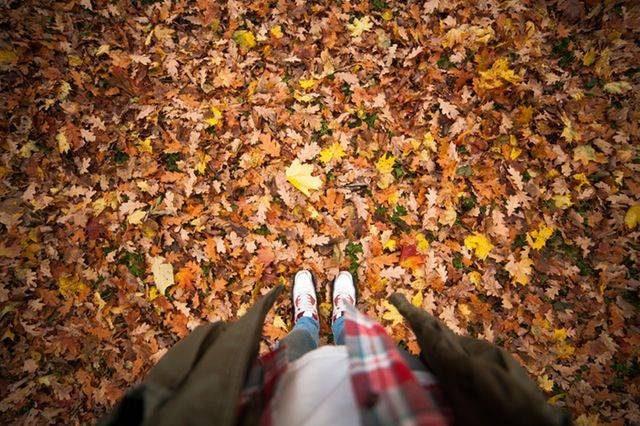Fall Season Increases Testosterone Levels In Men And Women, Leading To Better Sex Life, Fertility

The beginning of autumn means the leaves are falling, pumpkins and apples are growing, and our libido is rising. Our hormone levels fluctuate throughout the seasons, as testosterone decreases in the summer, peaks throughout fall, and slowly decreases over the spring. So, how do the rise and fall of testosterone levels affect our sex life and our fertility?
Testosterone levels and sperm counts — associated with sex drive — are highest in late fall and early winter, which could initiate sexual desire. Previous research has found the difference in monthly levels of testosterone varied up to 31 percent for men, though women are also affected.
In a 2006 study, researchers examined seasonal testosterone fluctuations in the saliva of 220 women and 127 men. They also measured the waists and hips of the female study participants throughout the seasons. Similarly, women's and men's testosterone levels were highest in autumn. Unlike men, women also had high testosterone levels in the summer, while men showed lowest testosterone levels in the spring.
This suggests seasonal changes in hormones, including testosterone, do occur, also influencing the timing of conception. Sperm concentration and count are lowest from August through October due to the summer heat; when the weather cools, it takes a few weeks for counts to increase again. They tend to rise in late autumn and exceed baseline values, meaning it's prime baby-making season.
Uncoincidentally, there is a noticeable seasonal birth pattern. November and December are the most fertile months of the year, with birth rates highest nine months later, in August and September. Aside from high testosterone and sperm count, evolutionary theorists suggest making babies in the fall and winter may be an subconscious strategy we use for producing an offspring with a better chance of survival. This could explain why sperm tend to be healthier and strong in the winter months, according to a 2013 study.
It's still a mystery why seasonal changes influence testosterone levels. Whether it's triggered by decreasing daylight, increased social activity, or an evolutionary impulse has yet to be determined. But, this is the closest thing humans have to a mating season.



























